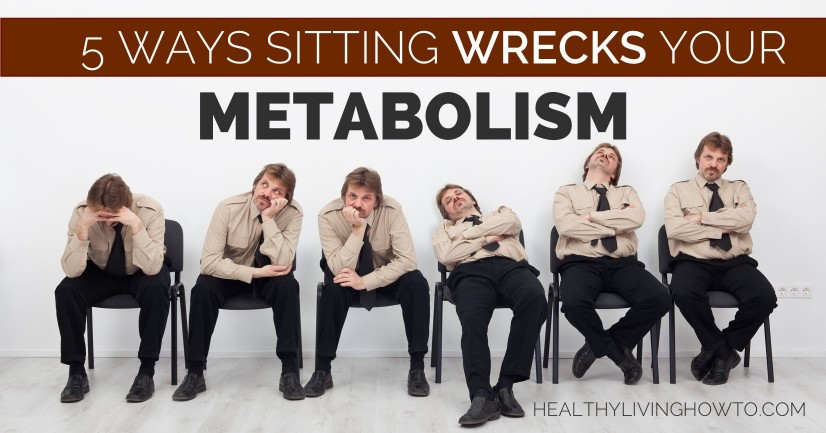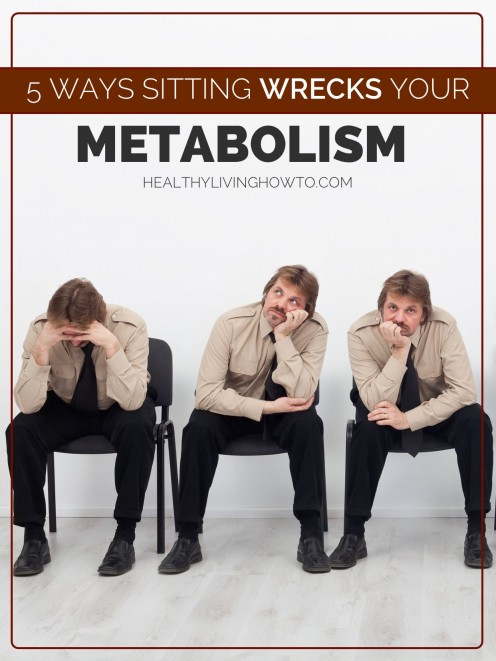If you’re like most people, you probably think you’re pretty active, especially if you try to compare to others you know. Your weekdays are filled with running around and all kinds of chaos. If you consider yourself active, you’d be among a majority of people who think the same way. In fact, about two out of three people (65%) of the American population admits that they get in at least as much activity as is recommended. At least this is what people say when they’re surveyed.
However, when people’s activity levels are measured, only 5% of the population gets in the recommended level of activity every week. That’s right, 65% of the population believes they get enough activity, but only 5% actually does!
The other 60% that thinks they’re active probably equate being busy with being active, and the two are dramatically different when it comes to your metabolism.
Movement, or being active throughout the days is not about burning more calories. If that was the case you could just exercise intensely for an hour each day and then sit the rest of the day (which is what most gym-goers do). No, the reality is that our bodies are designed to move often throughout the day. Exercise is important, but if you sit too much, you may set yourself up for some serious health problems, regardless of whether you exercise or not.
5 Ways Sitting Wrecks Your Metabolism
The following are 5 ways sitting impacts your metabolism and health. They are summaries of a review paper from the Journal of Applied Physiology.
1. Inactivity Makes You Insulin Resistant
Insulin is an important hormone. It lowers blood sugar levels when they get too high. Elevated blood sugar is toxic to the body’s cells, so when blood sugar levels rise, insulin is secreted, which makes the body shift from burning fat to burning sugar. It also helps shuttle sugar into your muscles and liver.
Over time, eating a diet too high in carbohydrates can cause muscle cells and other tissues to stop responding to insulin. As a result, more insulin must be secreted to lower the same amount of blood sugar. If this continues for too long, it can lead to type 2 diabetes. But we're not talking about diet here; we're talking about being too sedentary.
Research shows that muscle tissue can become insulin resistant from inactivity as well. The same effects on tissues can take place without over-consuming carbohydrates. Thus, even those who follow a low-carbohydrate diet can become insulin resistant by spending too much time sitting. Honestly, this is one of the major frustrations I have in people relying too much on a specific diet to bring them to health. Moving and exercising are very important as well.
2. Inactivity Raises Lipid Levels
When the body becomes insulin resistant, insulin levels rise. Elevated insulin prevents the body from burning fat and causes it to burn sugar instead. If there isn't enough sugar, it can make sugar by breaking down muscle into amino acids.
Insulin resistance doesn't just affect muscles. Another primary tissue it affects is the liver. As the liver becomes more insulin resistant, it can accumulate more fat, known as fatty liver. It also produces more fat from carbohydrates. As a result, triglycerides and very-low-density lipoproteins (VLDL) increase. The solution isn't a low-fat diet, because all those extra carbs from the low-fat diet can easily be converted by the liver to triglycerides.
I touched on this in my article about Why I Love Lab Testing. When I started measuring how much I was moving each day, I found that I averaged about 6000 steps per day. Since November, I've made sure I’ve ended each day with at least 10,000 steps. So far, I've missed that target on 8 days in eight months. I believe it caused a pretty significant shift in my own lipids as a result.
3. Inactivity Reduces Your Ability to Burn Fat
Obviously based on the above, with higher insulin levels, you’ll have a hard time burning fat no matter how low you keep your calories. Instead, if you have elevated insulin on a low-calorie diet, you’re much more likely to burn up muscle tissue than fat.
When your muscles aren't used enough, they change composition. Slow-twitch, fat-burning, mitochondria-rich muscle tissue begins to disappear. Since you’re not moving around much, and you’re not able to burn fat, you can quickly lose mitochondria.
This can lead to a downward cycle because mitochondria are necessary for energy. If you lose mitochondria, you’ll have less energy for activity. Without activity, you lose more mitochondria. It may be that, for a time, you simply need to “will” yourself back to activity and build back those mitochondria.
4. Inactivity Stimulates Fat Storage
Based on what you've read so far, you probably understand that some of the extra fat floating around your body will get stored. However, it doesn't just get stored in your belly, thighs and arms. Fat can actually get stored between your muscle cells, in your bone marrow, around your liver and other undesirable places. This is called ectopic fat storage. The result is fat showing up places you don’t even have fat cells.
The trouble is, if you’re inactive, you won’t be able to burn the fat very well, even if you eat a reasonable, low-carb diet.
5. Inactivity Lowers Bone Density
If you don’t use it, you lose it. Just as you don’t keep muscle you’re not using, you can also lose bone density if your bones don’t encounter stress each day. In the second half of life, it becomes more difficult, though not impossible, to regain lost bone density. The best thing you can do is not stop moving unless you absolutely have to.
Moving More
Unless you measure how much you move, your mind will very likely convince you that you’re far more active than you actually are. There are a number of activity monitors available, but I’m a huge fan of the Fitbit. It’s small so it’s easy to keep it with me at all times. It measures steps taken, stairs climbed and it can even monitor your sleep. It easily syncs with a smartphone.
Once you start measuring, you’ll be amazed at how many extra steps you’ll take each day to get to 10,000 steps, which is actually just a standard, reasonable number of steps we should all be taking each day.

